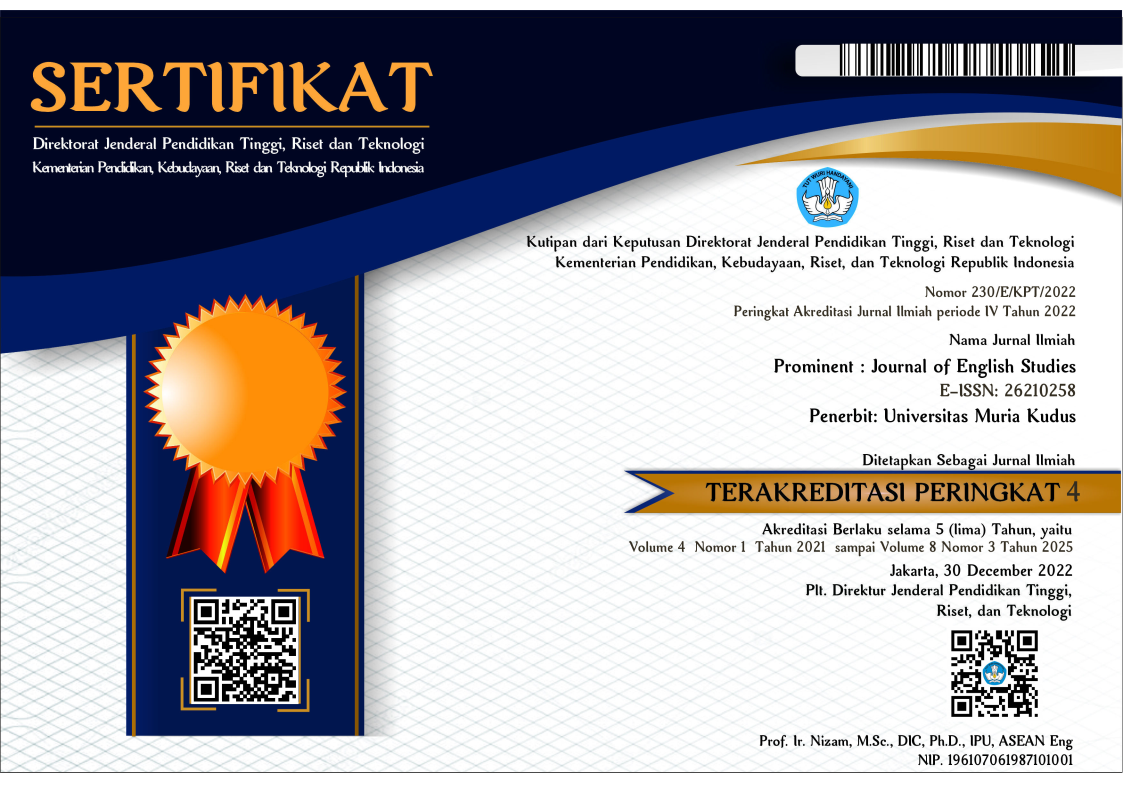What are the functions of discourse markers uh & um?
Abstract
Abstract: This paper examines the function of uh and um in spontaneous speaking by an English native speaker which focuses on the analysis of the function of delay markers in conversation particularly in answering questions spontaneously. The data was collected from an interview with an English native speaker as the participant, a male Australian postgraduate student of an Australian university. The utterances in the transcript were analyzed applying the conversation analysis method. It is found that there are some functions of uh and um in the participant’s speech such as; looking for the answer by repeating the question, searching for words, changing the structure of the sentence after pausing, keeping the floor, deciding what to say next, pausing in his long answer and pausing in his first utterance, repeating the question before answering it and ceding the floor.
Keywords
Full Text:
PDFReferences
REFERENCES
Bortfeld, H., Leon, S. D., Bloom, J. E., Schober, M. F., & Brennan, S. E. (2001). Disfluency rates in conversation: Effects of age, relationship, topic, role, and gender. Language and Speech, 44(2), 123-147. Retrieved from http://0-proquest.umi.com.alpha2.latrobe.edu.au/pqdlink?did=89540567&Fmt=6&clientId=20828&RQT=309&VName=PQD
Clark, H.H., & Fox Tree, J.E. (2002). Using uh and um in spontaneous speaking. Cognition 84(1), 73–111. doi: 10.1016/S0010-0277(02)00017-3
Fox Tree, J.E. (2002). Interpreting pauses and ums at turn exchanges. Discourse Processes, 34(1),37-55. Retrieved from http://dx.doi.org/10.1207/S15326950DP3401_2
Fox Tree, J. E. (1995). The effects of false starts and repetitions on the processing of subsequent words in spontaneous speech. Journal of Memory and Language, 34(6), 709-738. doi: 10.1006/jmla.1995.1032
Fraundorf, S.H., & Watson, D. G. (2011). The disfluent discourse: Effects of filled pauses on recall. Journal of Memory and Language, 65(2), 161–175. doi:10.1016/j.jml.2011.03.0
Grancea. L. (2007). Conversation analysis: method, concepts, applications. Cognitie, Creier, Comportament / Cognition, Brain, Behavior, 11(2), 331-352. Retrieved from http://0-proquest.umi.com.alpha2.latrobe.edu.au/pqdlink?did=1336338141&Fmt=1&clientId=20828&RQT=309&VName=PQD
Hutchby, I., & Wooffitt, R. (1998). Conversation Analysis: Principles, practices and application. Cambridge: Polity Press.
Kam, C.L.H., & Edwards, N.A. (2008). The use of uh and um by 3- and 4-year-old native English-speaking children: Not quite right but not completely wrong. First Language, 28(3), 313-327. doi: 10.1177/0142723708091149
Liddicoat, A.J. (2011). An Introduction to conversation analysis. Chennai: Continuum
Markee, N. (2007). Conversation analysis: Issues and problems. In J. Cummins & C. Chris (Eds.), International handbook of English language teaching: International handbooks of education (pp. 1017 – 1032). doi: 10.1007/978-0-387-46301-8_68
Paltridge, B. (2009). Discourse analysis: An introduction. London: Continuum.
Sacks, H., Schegloff, E. A., & Jefferson, G. (1974). A simplest systematics for the organization of turn-taking for conversation. Language, 50(4), 696–735. Retrieved from http://www.jstor.org/stable/412243
Schiffrin, D. (1991). Conversation analysis. Annual Review of Applied Linguistics,11(1), 3-16. doi:10.1017/S0267190500001926
Seedhouse, P. (2005). Conversation analysis and language learning. Language Teaching. 38(4), 165-187, doi:10.1017/S0261444805003010
Sidnell, J. (2007). Comparative studies in conversation analysis. Annual Review of Anthropology, 36(1), 229–44. doi: 10.1146/annurev.anthro.36.081406.094313
ten Have, P. (1999). Doing conversation analysis: A Practical Guide. London: Sage.
Tottie, G. (2017). From pause to word: uh, um and er in written American English. English Language and Linguistics 23 (1), 105–130. Cambridge University Press 2017. doi:10.1017/S136067431700031
DOI: https://doi.org/10.24176/pro.v4i2.6169
Refbacks
- There are currently no refbacks.
Prominent Journal of English Studies is licensed under a Creative Commons Attribution-ShareAlike 4.0 International License.
Dedicated to:

in Collaboration with APSPBI:





